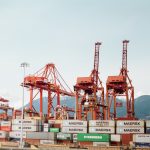Wholesale and Retail Trade

Wholesale exchange comprises foundations who offer products to different organizations. They orchestrate the buy or offer of merchandise for resale (i.e., merchandise offered to different wholesalers or retailers), capital or sturdy nonconsumer merchandise, and crude and middle of the road materials and supplies utilized underway. Foundations playing out these exercises might deal with branches kept up with by assembling, refining, or mining endeavors separated from their plants or digs to sell their items. They additionally might be specialists or agents who set up for the buy or offer of merchandise claimed by others, regularly on a commission premise.
Foundations inside the retail exchange area additionally sell stock, yet not at all like wholesalers, retailers sell stock (in little amounts) to the overall population for individual or family utilization. Sometimes retailers offer products to organizations and establishments. Retailers might work stores, intended to draw in countless stroll in clients. This incorporates foundations like office supply stores, supermarkets, car vendors, and gas stations. Different retailers, similar to home warming oil vendors and home paper conveyance sellers, sell straightforwardly to people in general yet don’t sell their product from a storefront.1
The wholesale and retail exchange area utilizes more dollars of transportation benefits and requires more transportation administrations per dollar of result than some other area. The area depends vigorously on truck transportation administrations, with the wholesale exchange industry delivering the most tons and biggest worth of item by truck, and utilizes countless weighty and semi truck transporters and light truck/conveyance administration drivers.
In 2014 the wholesale and retail exchange area consolidated contributed $2,042.3 billion (11.8 percent) to the public economy, as estimated by (GDP). The wholesale exchange area contributed $1,044.5 billion (6.0 percent), while the retail exchange area contributed $997.8 billion (5.8 percent).
The biggest measure of wholesale and retail exchange action happened in California ($268.0 billion), followed by Texas ($207.4 billion), New York ($136.5 billion), Florida ($123.2 billion), and Illinois ($92.7 billion) (figure 6-2). These five States produce a greater amount of general labor and products than different States (they contribute the most to public GDP).
Registering the percent of wholesale and retail exchange as a percent of gross state item (GSP), instead of as a portion of GDP, additionally gives helpful bits of knowledge to U.S. creation. Broadly, California leads in wholesale and retail exchange. Be that as it may, wholesale and retail exchange represented a more modest portion of GSP in California (11.6 percent) than in Florida (14.7 percent) and New Jersey (14.3 percent) – the main two States where wholesale and retail exchange represented more than 14.0 percent of GSP in 2014 .
The wholesale and retail area was the biggest client of transportation administrations in 2012 ($279.3 billion). The wholesale and retail exchange area depends vigorously on in-house transportation activities. Taking a gander at the utilization of air, rail, truck, and water transportation benefits, the area involved more in-house transportation activities ($157.4 billion) than for-recruit administrations ($122.0 billion).
The wholesale and retail exchange area utilized $279.3 billion of transportation administrations 2012 (figure 6-3). In 2012 the wholesale and retail exchange area utilized:
- Basically truck transportation administrations (e.g, used to convey merchandise, like attire and food, to stores), which represented 62.6 percent ($174,882 million) of all transportation administrations utilized by the area.
- More in-house truck transportation tasks ($157,369 million) than for-employ truck transportation administrations ($17,513 million). In-house truck transportation activities represented almost 66% (56.3 percent) of all transportation administrations utilized by the area.
- A lot of warehousing and other transportation administrations (package conveyance, dispatch, and courier administrations barring U.S. Postal Service, transportation support exercises, for example, cargo stacking, and so forth) Warehousing represented 18.5 percent ($51,697 million) of the transportation administrations utilized by the wholesale and retail exchange area, and different administrations represented 16.4 percent ($45,748 million).
- A limited quantity of available air, rail, and water transportation administrations ($6,363 million), which altogether represented 2.3 percent of the transportation administrations utilized by the area.
- No quantifiable measure of in-house air, rail, or water transportation tasks.
- A more modest measure of for-recruit pipeline transportation ($56 million) and travel and ground traveler transportation administrations ($592 million) (e.g., transport transportation bought for laborers) than some other transportation modes.




